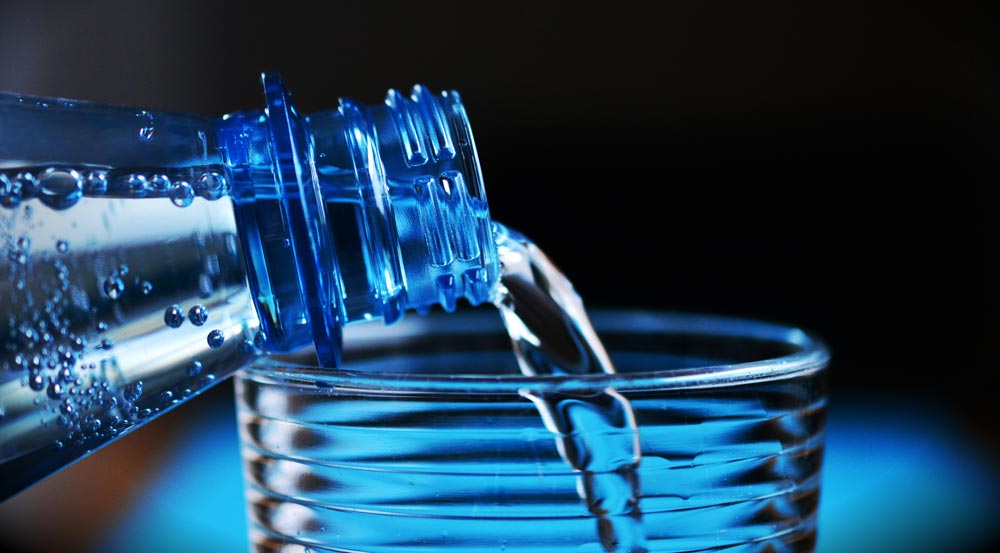How to Avoid PFAS in Sparkling Water
Article
If you’re a frequent consumer of sparkling water, follow these steps to avoid accidentally consuming PFAS chemicals.
Understanding PFAS in Sparkling Water
Recent reports have raised concerns about the presence of Per- and polyfluoroalkyl substances (PFAS) in some brands of sparkling water. PFAS are a group of synthetic chemicals that have been linked to a variety of adverse health effects and have been used in industries around the globe since the 1940s. Due to their strong bonds and resistance to heat, water and oil, these chemicals have been used in products ranging from non-stick cookware to fire-fighting foams. PFAS are known as “forever chemicals,” because they do not break down easily in the environment or the human body, meaning they can accumulate in you over time. They can enter the human body through various routes, such as consuming contaminated food or water (including store-bought and tap water), inhaling air containing these chemicals or through skin contact. Studies have indicated that exposure to these substances may have several potential health impacts. These include:
- Developmental issues: High prenatal (before birth) or postnatal (after birth) exposure to some PFAS can result in low birth weight, smaller head circumference and developmental delays in infancy and childhood.
- Immune system effects: Some studies have shown that PFAS exposure can impact the immune system, resulting in decreased vaccine response and potentially increasing the risk of autoimmune diseases.
- Cholesterol levels: Certain PFAS may increase levels of cholesterol in the blood, a risk factor for heart disease, stroke and other ailments.
- Cancer risks: Some studies have found associations between PFAS exposure and increased risk of certain cancers, particularly kidney and testicular cancers.
- Hormonal disruptions: PFAS can interfere with natural hormones in your body, which can impact a range of functions including metabolism and reproductive health.
- Liver function: Exposure to some PFAS can affect liver function, potentially leading to changes in liver enzymes and increased risk of liver damage.
It’s important to note that the specific health effects can vary depending on the type of PFAS, the level and duration of exposure and individual health factors. But given this concern, it’s crucial to understand how to avoid PFAS in sparkling water to maintain a healthy lifestyle. Here are some tips you can follow:
Check Labels & Brand Websites
Brands that are committed to quality and health will often display relevant information about their products on their packaging or websites. Look for statements about PFAS testing or filtration. Brands that test their water for PFAS and have an effective filtration system in place are likely safer options.
Research Brands
Even if brands don’t provide information about PFAS testing on their packaging or website, you can reach out to them directly or conduct some independent research online. Many consumer advocacy groups, scientific researchers and public health organizations conduct independent testing of consumer products for various contaminants, including PFAS. They typically publish these results online, so they can be a good source of information. Here are some links:
- Environmental Working Group (EWG), a non-profit, non-partisan organization dedicated to protecting human health and the environment. They conduct independent research and provide resources to help consumers make informed decisions. They have a comprehensive database about PFAS contamination in the United States.
- Consumer Reports is a trusted consumer advocacy organization that conducts rigorous research and testing on a wide range of products. They have tested for PFAS in a variety of consumer products, including water.
- Centers for Disease Control and Prevention (CDC)—their National Center for Environmental Health conducts research on the health effects of PFAS and monitors exposure in the U.S. population.
- The Food and Drug Administration (FDA) conducts testing for PFAS and other contaminants in food and beverages, including bottled water.
- National Institute of Environmental Health Sciences (NIEHS), which is part of the National Institutes of Health, conducts and funds research on the health effects of PFAS.
- Silent Spring Institute is a scientific research organization that focuses on environmental chemicals and women’s health. They have conducted research on PFAS in drinking water and other products.
Avoid Certain Packaging
While the sparkling water itself may be free of PFAS, the packaging might not be. PFAS can be found in food packaging, including certain types of bottles and cans, due to their water and grease-resistant properties. Look for brands that use PFAS-free packaging. If you’re unsure, you can contact the company or look for independent testing of packaging materials.
Opt for Glass Bottles
Glass bottles are generally a safer bet when it comes to PFAS contamination. They don’t contain PFAS or other potentially harmful chemicals found in some plastic and metal packaging. In addition to being safer, they’re also more environmentally friendly—as long as you recycle them and don’t just throw them away (and confirm that your community recycling systems actually reuse or recycle the particular types of bottles you buy – always check to be sure).
Consider Home Carbonation Systems
If you’re a frequent consumer of sparkling water, investing in a home carbonation system could be a good choice. This allows you to control the quality of the water you’re using. Just ensure that the water you’re carbonating is filtered and free of PFAS by looking at relevant studies.
Use Certified Water Filters
Whether you’re using a home carbonation system or just want to ensure your drinking water is free of PFAS, a water filter certified to remove PFAS can be a good investment. Remember to regularly replace filters as per the manufacturer’s instructions to ensure they continue to work effectively.
Advocate for Better Regulations
Beyond testing yourself for PFAS exposure, on a broader scale, one of the most effective ways to avoid PFAS in sparkling water is to advocate for stronger regulations on these chemicals. Support organizations that are fighting for stricter PFAS regulations and vote for policymakers who prioritize clean water and public health.
While the presence of PFAS in sparkling water can be concerning, being proactive and educated can help mitigate risks. By following these steps, you can enjoy your sparkling water with less worry about potentially harmful substances. After all, knowledge is power when it comes to your health. So, keep informed, choose wisely and drink healthily!
If you work for a manufacturing company seeking to remove PFAS from your products or operations, check out our PFAS PAGE for more in-depth information.



